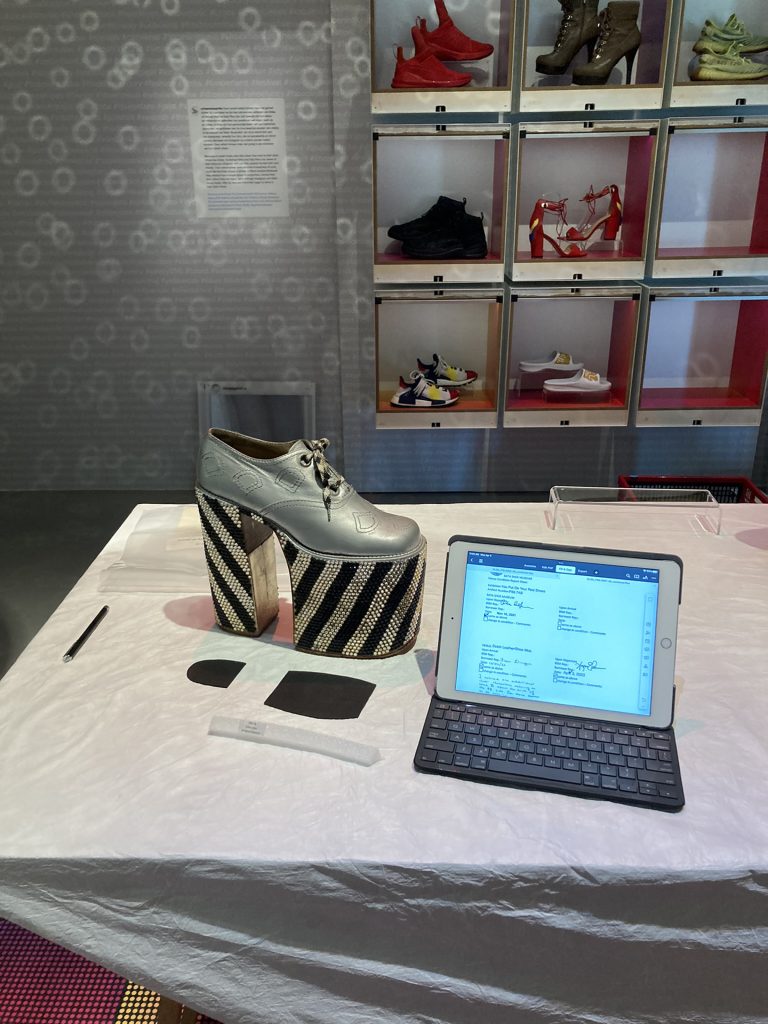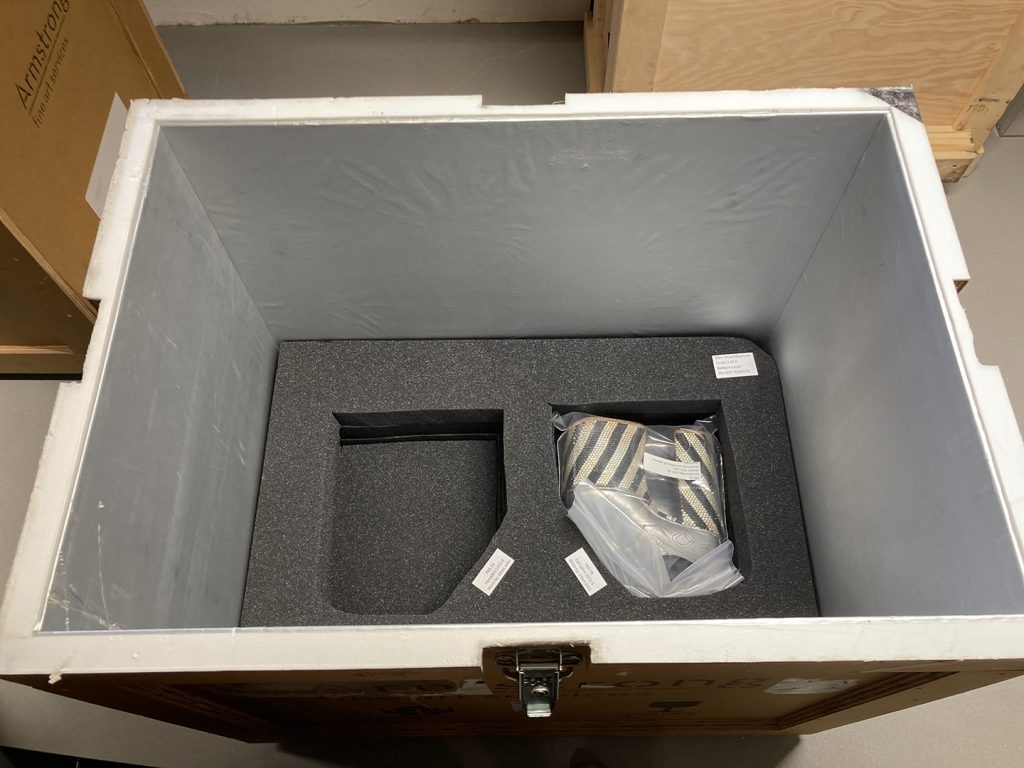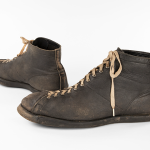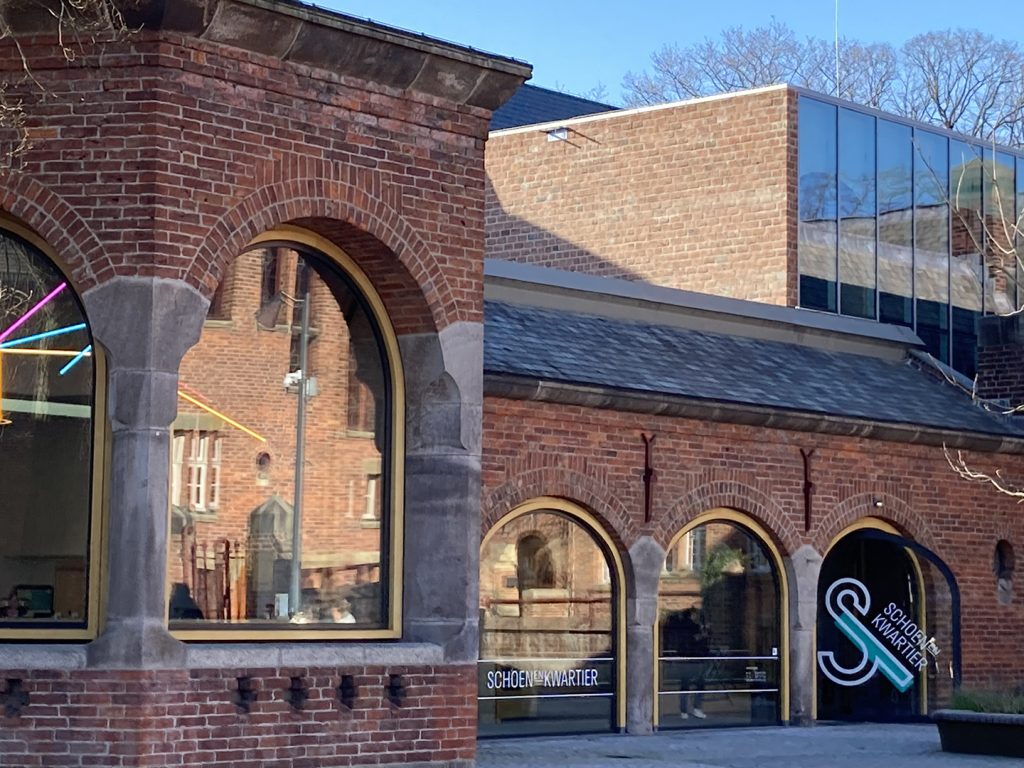
On April 5th the Schoenenkwartier’s celebrity shoe exhibition “Put On Your Red Shoes” ended its extended run in the lovely town of Waalwijk in the Netherlands. As I mentioned in a previous blog, the region was historically a leather and shoe production centre, providing footwear to surrounding countries and North America. You can read more about the shoe and leather industry on their website here. Today, the Schoenenkwartier celebrates the region’s history through a museum, a learning centre and an artistic laboratory where people can try their hand at designing and making footwear.
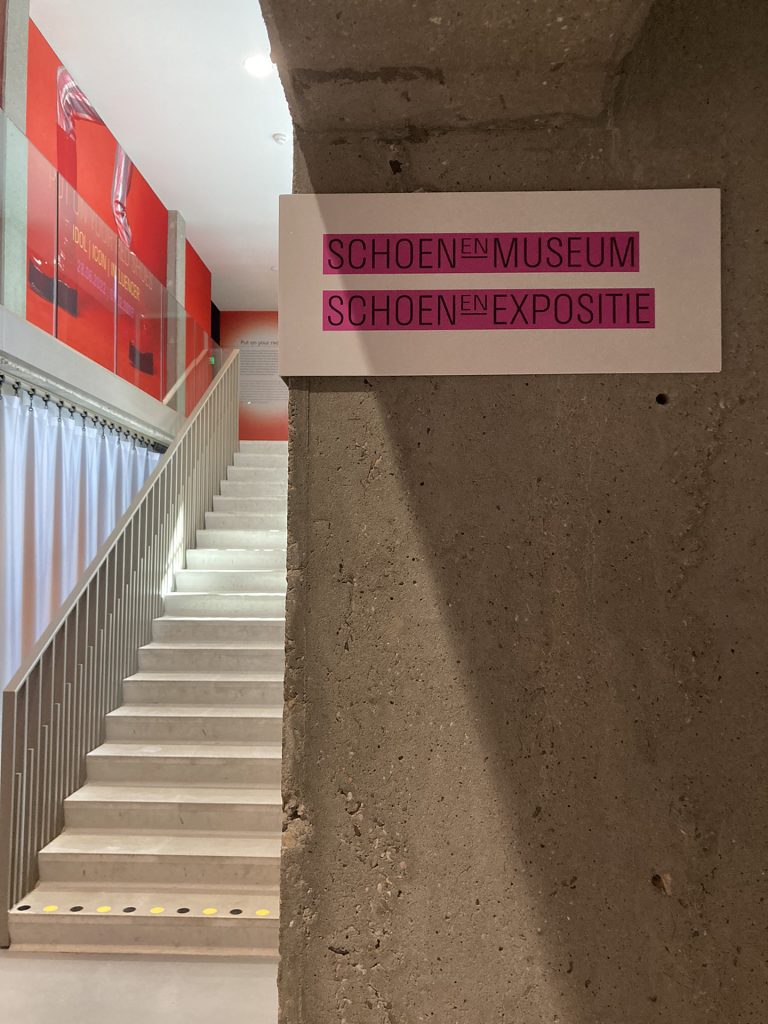
The Museum is at the top of the stairs. Look closely to see the large red image. That is David Bowie wearing tall red boots with thick black soles from his “Aladdin Sane” tour in 1972-1973.
On April 6th, I was in Waalwijk to do part of the deinstallation of the exhibition. Museums that lend out artifacts send their own art handlers to the loan site because we are the ones who know the detailed condition of each loan object. Each object has its own unique problems or weak spots, and so knowing each object allows for the best handling, documentation and packing solutions. For those reasons I was at the Schoenenmuseum to remove the Bata Shoe Museum (BSM) collection shoes from display, and prepare them for the trip home to Toronto.
On that morning of April 6th, all of the lenders and the Scheonenmuseum curatorial team had arrived, and we could start to remove the case lids.

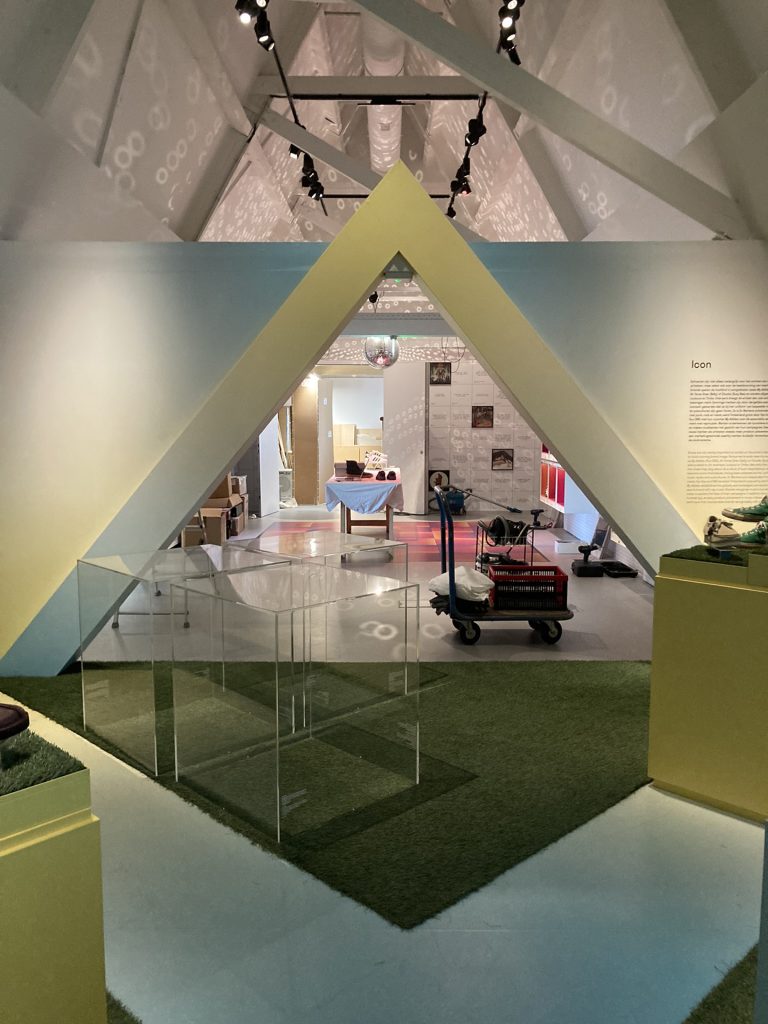
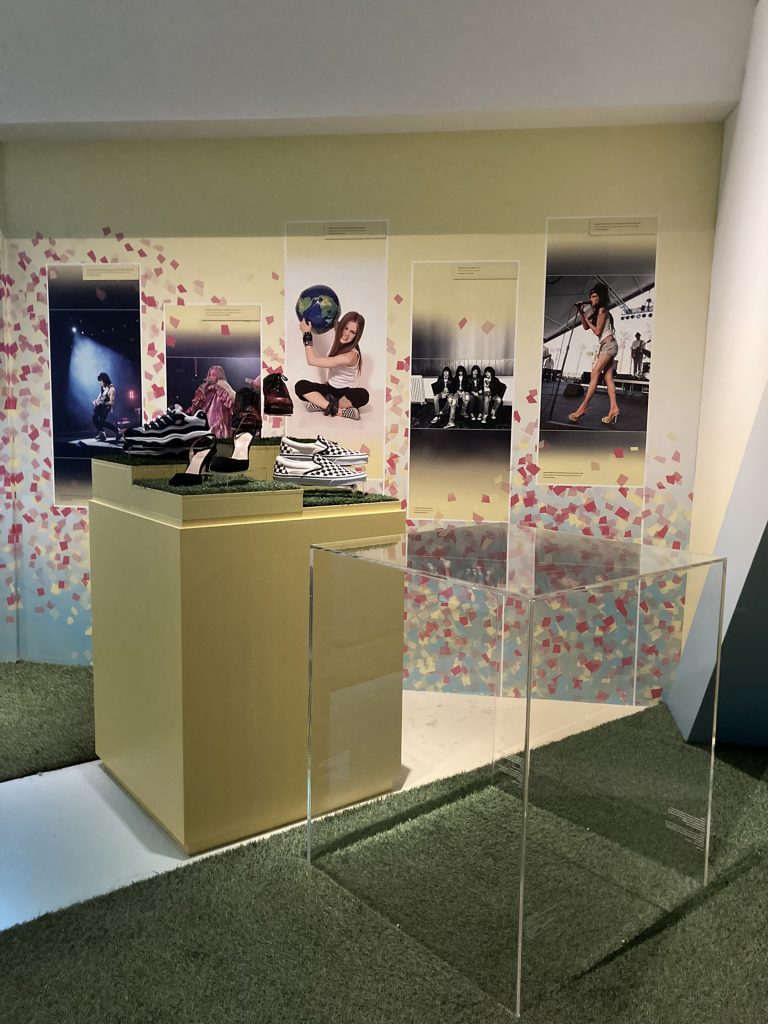
For me, the next step was to remove the BSM artifacts from the exhibition, working with one pair at a time. The task involves carefully looking over the display case and the shoes themselves to find any change in condition, like flaking, cracking, discolouration or change in surface texture. Sometimes flaking can be noted on the surrounding display surface. Changes due to deterioration can be accelerated by light and by the microclimate inside the exhibition case. They can be difficult to notice at first, so after exhibition we check the condition of each artifact very carefully against the documents we have from the installation.
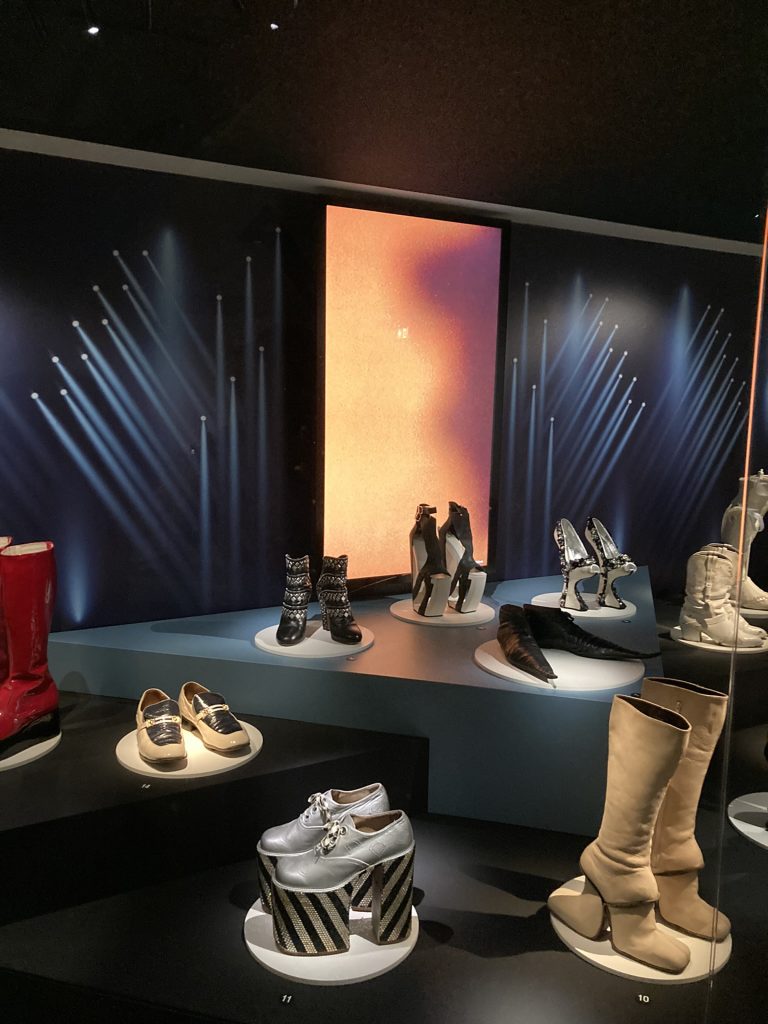
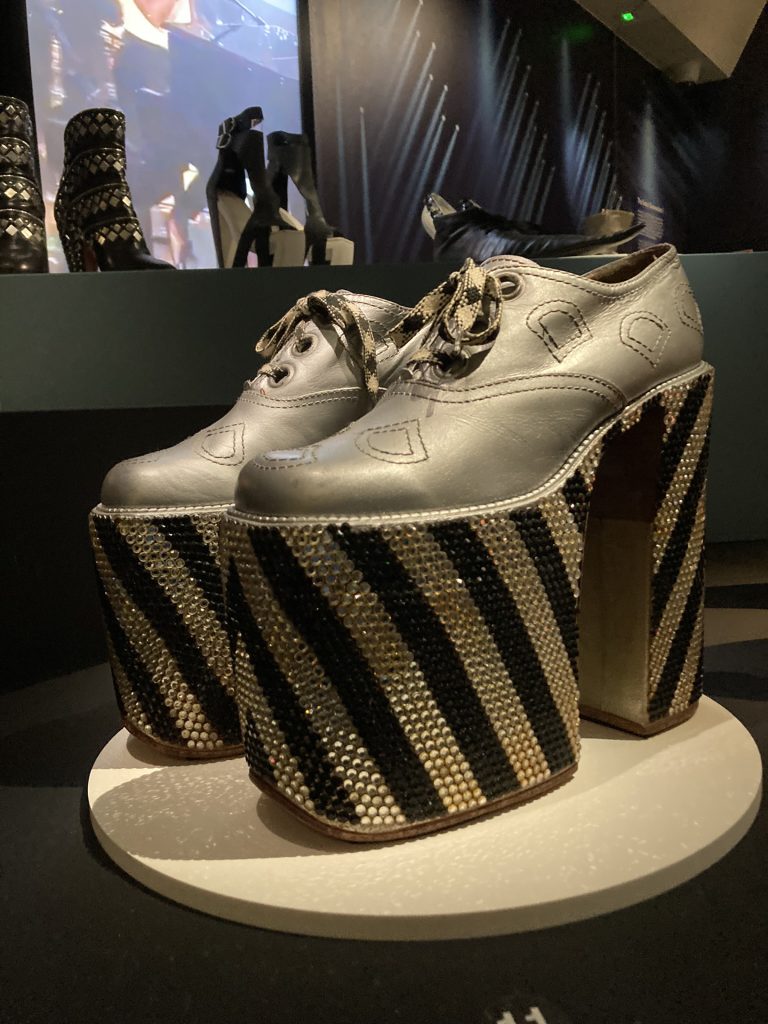
Once I have taken a good look at the shoes in-situ, I carefully move them, one at a time to an examination table with additional lighting, nearby. Under the shoes at each contact point with the display surface, an inert, thin pad protects the artifact from the painted surface, gives a bit of cushioning, and gives some traction so the artifact does not move at all during the exhibition period.

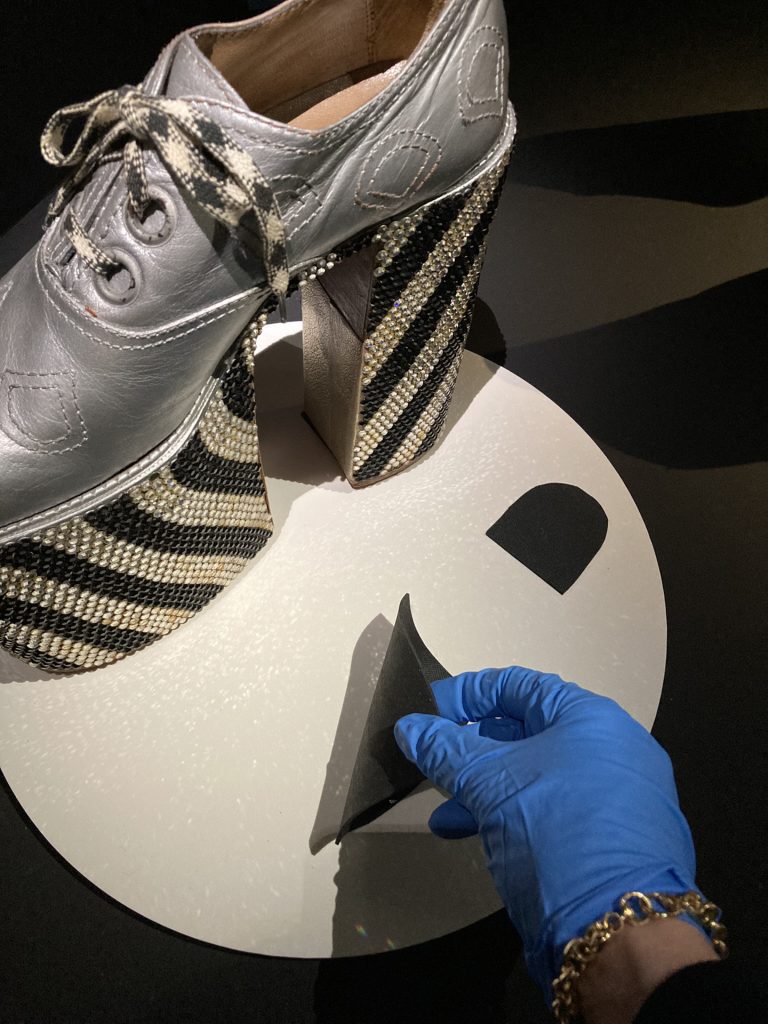
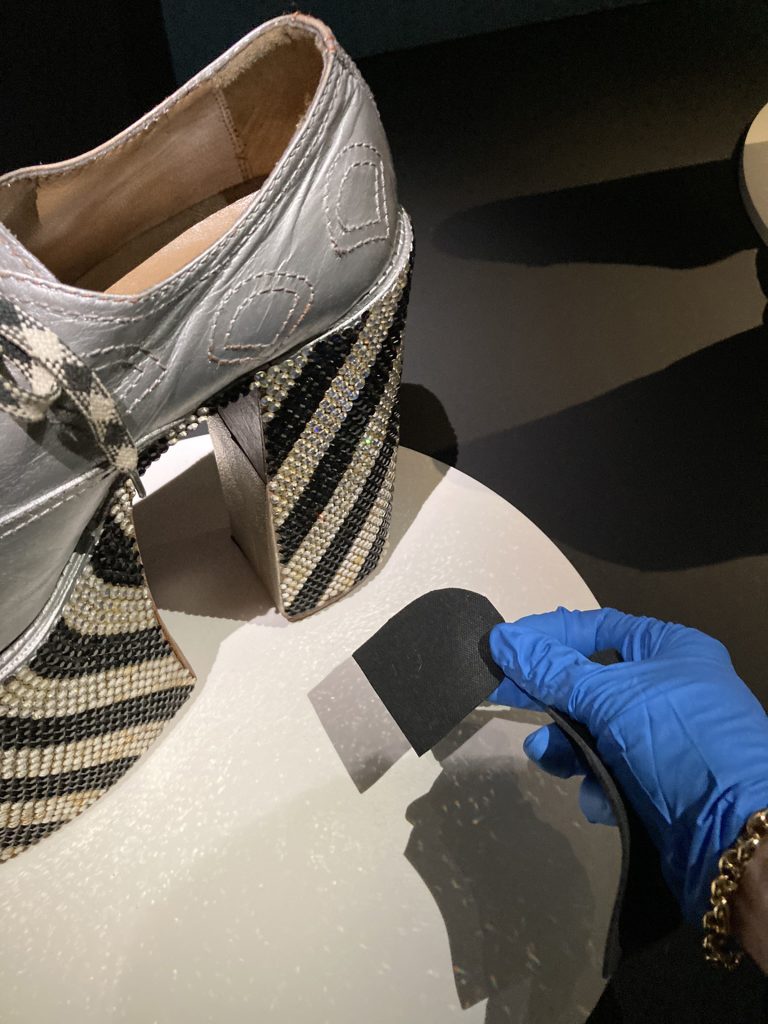
The examination table is covered with Tyvek ™, an inert material that will not damage the artifacts chemically or physically. At the table, I reviewed the condition of the artifact, looking particularly at the rhinestones, as the glue has hardened with age and has been failing. The iPad has the PDF Expert app, which makes adding notes, photos and signatures easy. The condition report is in PDF format, and I go through all the details of the report, which is usually between 10 and 25 pages long. Once my inspection is complete, and I have noted any issues, I sign the condition verification page, and have a colleague with the borrowing institution co-sign.
Finally, this pair is carefully placed in its shipping compartment within the crate. The other nine pair follow a similar process, and when done, the shipping crates are sealed and locked. Ready for their transatlantic trip home to Toronto. They will be transported by fine art transport, a method that ensures the crates are kept under high security and handled as fragile pieces from the time they leave the Schoenenkwartier until they arrive at the BSM.
Suzanne Petersen
Collections Manager
